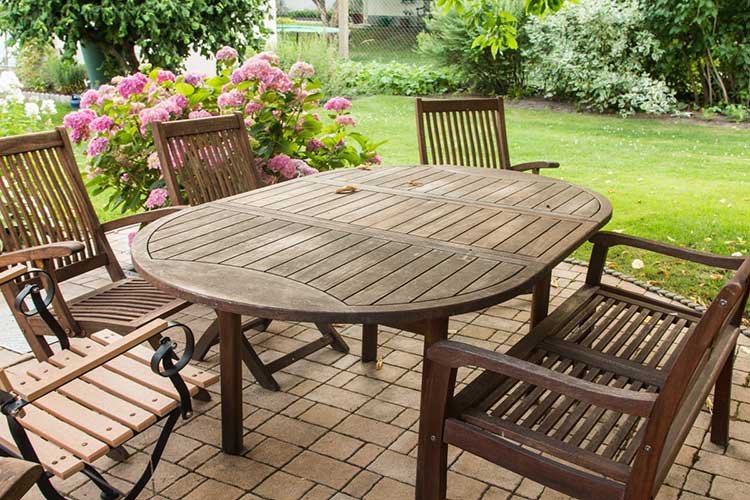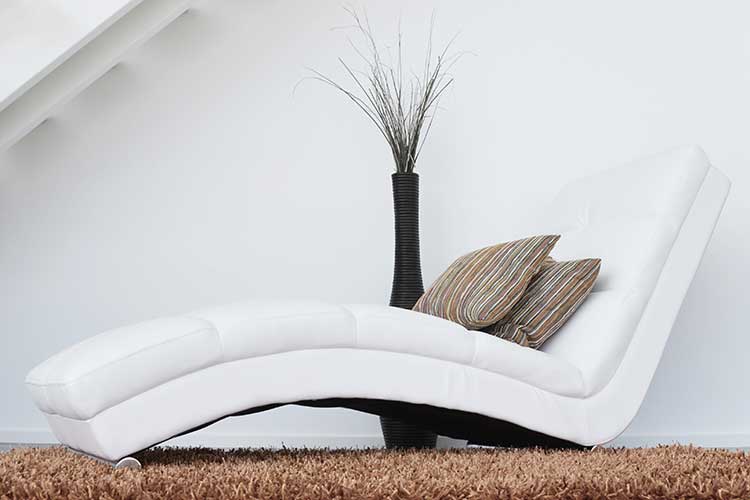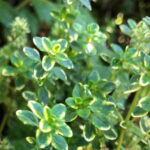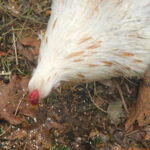After much hard work, you have a beautiful garden bursting with flowers and glorious harvests of various vegetable and fruity goodness. However, an unseemly horror lurks in the corner of your mini-Eden, long forgotten as the seasons have cycled from one to the next. Yes, that’s right, your unloved garden furniture. It’s there. It looks sad. It needs help.
Perhaps you’ve put a tarp over this terrible display of neglect in the effort to protect the furniture from the elements and yourself from having to think about cleaning it all. But it doesn’t have to be like this! Come rain or shine, just as there’s a perfect way to grow anything from Peruvian lilies to sweet potato vines, there is also an ideal way to care for your outdoor furniture.
So whether wood, plastic, or something in between, don’t be daunted by caring for your outdoor furniture year round. I’m here to offer you some great assistance on exactly how to bring life and beauty back to your forgotten picnic table or your tired plastic seating.
Basic Care Tips
First and foremost, let’s go through some basic tips on the care of your garden furnishings to make sure that you can keep them in tip-top shape!
Plastic Furniture

Plastic furniture has become a staple in many home gardens across the world. It’s cheap, it’s reliable, and it’s easy to clean. Resilient year round, this is the garden furniture which generally requires the least amount of maintenance.
However, during summer it can become weaker or misshapen if constantly in direct sunlight. When not in use, it should be kept in a shaded area whenever possible. The stackability of plastic furniture makes this easy to achieve. If it’s heavier plastic or one of the commercial resins, it may have some sun protection, but it’s still good to try to keep it shaded whenever possible.
To clean plastics and resins, simply use a cloth dunked into a mix of warm water and dish detergent. Most dirt can be wiped away easily with this. If you have fine crevices, you can use a soft toothbrush and a very gentle hand to get dirt out of those. Avoid scourers or anything with the potential to scratch the surface of the furniture, as plastic tends to be soft. Similarly, power washers can damage the furniture and should also be avoided. Be sure to rinse it off with water once it’s clean, and let it air-dry.
Wooden or Wicker Furniture

Wooden furniture is a beautiful addition to your garden, but it may need a little more work than your average plastic deck chair. Yearly treatment with stains may be necessary to maintain the beautiful appearance of the furniture. This regular treatment should mean that your wooden furniture is safe to keep outside all year round. However, it’s still best to keep it indoors or in a shed during the wetter and colder months.
Softwood furniture – such as pine, which is a typical garden furniture material – especially needs treatment to protect it from the elements. Typically, your furniture will have been treated prior to you taking it home from the store, but a wood preserver as an added coat is excellent to maintain the furniture. One can of this will last you a few years, so keep it in your shed for later.
When applying any wood treatment, make sure everything is clean, dry and free of debris. There’s nothing harder than trying to remove dirt that you have accidentally painted onto the surface of your furniture. This is especially true in the nooks and crannies of wicker furniture, so beware!
Table Tops

Glass tabletops, while stylish, can be magnets for the dirt in your garden. Not to mention the fingerprints or various garden guests.
Any household glass window cleaner can be used for this aspect of your garden. Just remember to clean the underside of the table as well as the top. Cracks or chips can always be fixed by a standard automotive window repair kit. If they grow too large they can become dangerous, so keep a careful eye on any such issues.
If you have any problems with acid rain, or if you forget to clean your table too often, the rain or grit on the surface can etch into the glass. This can cause a cloudy or milky look to the glass. While there’s no easy way to remedy this, occasionally using an automotive wax can help protect the glass’s surface from further damage.
If your table has a tile top, it can be cleaned just as if it were glass. However, dirt and dust may build up in the grout lines. Using a soft toothbrush to scrub out the grout lines will make it look just like new.
Wooden tabletops should be cared for as per the wooden furniture guidelines mentioned above.
Cushions and Fabric Care

Most garden furniture comes with many options for cushions nowadays to increase the varieties of style and color in your garden. However, such cushions can easily attract a lot of dirt and general wear whilst outdoors.
During the summer, strong sunlight may cause these cushions to become prone to UV damage. Cotton and some yarn tends to hold its colour longer in the sunlight, so search for these materials if you want vibrant cushions throughout summer. Acrylic is also a notable material as it is mold-resistant, perfect for the outdoors.
Regular washing of outdoor cushions is necessary to keep them fresh. Dirt can become embedded in the fabric, so remember to always wash them on a high heat in order to remove all dirt and bacteria effectively (around 100°F). This should be done regularly, but especially before long term storage over the colder months.
A Note About Hammocks

If you are a lover of hammocks, you’ll want to check both the rope and the body of your hammock regularly to make sure that there are no weakened points in the fabric or the rope. If there are any weakened segments, it may be time to pick up a new hammock or to do some repairs. Patching the body of the hammock should be done with a sturdy cloth of the same type — if it’s canvas, use canvas patches — and should completely cover any weak spots on both sides. Hand-sewing it in place is fine, so long as you are careful to add reinforcement. Some hammock manufacturers make repair kits that come with patches, too.
If there are weak ropes, you should be able to replace them. While you can use either natural or manmade fiber ropes, you need one that is rated to hold the right level of weight, and you want a flexible style of rope – a stiff one won’t be comfortable. Remove the ropes at one end of the hammock and use them to measure out your new rope, and make two sets. Using the old rope on the other end of the hammock as a guideline, replace them in the same way that they were on there originally. Then remove the other side of the rope and replace that, too.
You’ll also want to check the hammock frame. If it’s metal, be sure that it isn’t rusting, and that if there are scratched parts on the frame you cover them with paint or other rust prevention. If it’s wood, be sure to check and make sure that it is free from cracking and that it is thoroughly sealed to protect the wood’s surface.
Stain Removal
Spills and stains should be avoided whenever possible, or you will have a long lasting memento of the incident. Wipe down any spills quickly with a dry cloth, then use a light soapy mixture (dish detergent and water is fine) to remove any discoloration that may occur. On wood or wicker, you can use a soft brush if necessary for this process, and on plastic, a piece of cloth is generally enough.
If your furniture does get stained by bird droppings or untended spills, it may be a problem. While well-sealed wood generally won’t stain as it’s protected, and any messes can be cleaned off, unsealed wood definitely does stain and it can be unsightly. If your wooden furniture is unsealed, you can sand the wood’s surface in the direction of the wood’s grain to remove most of the marking. However, once you’ve done that and made sure your furniture is clean and dry, you really do want to get a sealer on that wood to prevent further issues.
Wicker may also be susceptible to mildew issues which can stain and eventually severely damage the wickerwork. If you find mildew on your wicker, gently and thoroughly wipe the effected area with a mix of water and white vinegar on a cloth. Allow that to sit for a minute or two, and then use a clean, dampened cloth with just water to remove any excess vinegar. This should kill the mildew that’s there and help prevent further mildew buildup. Unfortunately, stains on wicker are hard to combat, but they also don’t look as bad as those on wooden surfaces.
Seasonal Furniture Care
There’s certain things which you should do in each season to ensure your outdoor furniture is maintained perfectly. Here’s a good checklist to follow!
Spring
Ah, spring! It’s time for lambs in the fields and the budding of plants across your garden. It is also the perfect time to help get your garden furniture back into tip-top shape for the season of barbecues and backyard gatherings ahead.
Whether you have kept your furniture under a tarp or furniture covers, in a shed, or even under your decking, there will undoubtedly be a build up of grime and cobwebs. Start by thoroughly wiping down and cleaning your furniture with water. Use a hose if there is a particularly bad build up (and if your wood is sealed!).
Then, make a simple solution that’s safe to use on all materials and surfaces. Mix a bucket with water to the halfway point, then add two cups of white vinegar and dishwashing liquid that specifically tackles grease. Work this solution into the surface of your furniture with a cloth or soft brush. The mixture should successfully remove all dirt and the odours that build up after long storage.
The final step should be to rinse away the solution, again with your garden hose or a bucket of plain water if you don’t have one. Be sure to avoid the temptation of using a power washer. This can be too strong, removing paint from surfaces and even aggravating cracks in wooden furniture.
By being as gentle as possible and using non-corrosive solutions, you can clean months worth of grime without ruining the integrity of your furniture, and make it perfect just in time for summer.
Summer
As summer begins, your furniture will see a lot of wear and tear. This includes stains, possible bug infestations and occasional damage. So, it’s best to be prepared for at least a weekly maintenance of your furniture. Think of it as part of your gardening routine: water the plants, mow the lawn and then wipe down the furniture. Keep your eyes open for potential cracking that may need repair, and if it’s necessary, clean the fabric of your cushions or hammock.
Be sure on the hottest days of the month to make sure any plastic furniture is in the shade during the heat of the day whenever possible. This will increase the longevity of your plastic chairs and tables.
Fall
While it grows chillier, the fall may not be the right time of year for you to put your furniture into storage for the season. With plenty of opportunities for bright days in the garden, it would be a shame to lose the furniture at such an early point in the year. But you should be prepared for quick changes in the weather.
Sudden winds, rain and even thunderstorms can occur spring up on if you’re not careful. Keep a close watch on weather reports and ensure you have time to put your furniture away before the bad weather starts. If it persists, then this may be the ultimate sign that you are ready for the winter care of your outdoor garden furniture.
Winter
As one famous fictional family puts it, “Winter is Coming!” This means rain, wind, snow and all sorts of other weather that will put your garden under wraps for the season. Putting your furniture indoors is the safest option to keep it in top condition, but there are also a few other tricks you could use.
A weatherproof plastic cover can be placed over a carefully stacked selection of your garden furniture. This is better if it’s possible to secure the sheet to the ground, allowing for you to close the gaps to the outside world as tightly as possible. Creepy crawlies will still find their way inside, but hopefully, the weather will not. You may also be able to purchase commercial furniture covers that will fit your furnishings, and those are great for wooden or wicker products that don’t stack well.
If you have a storage shed, this is the best home for your outdoor furniture over the cold months. The shed is even better if there’s also some sort of protective cover, as damp can form even inside sheds, so this will be an extra layer of protection.
So, there you have it! All you need to know to keep your garden furniture shining no matter the season. Of course, there’s always room for improvement. Any more tips or methods are always greatly appreciated!
About Zara Halliwell: Newbie gardener by day and a writer by night, I am in a never ending cycle of cultivation. Be it nature or words. Battling against dirt is also a fun hobby.









